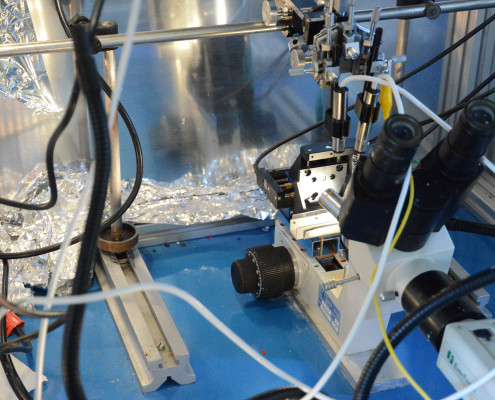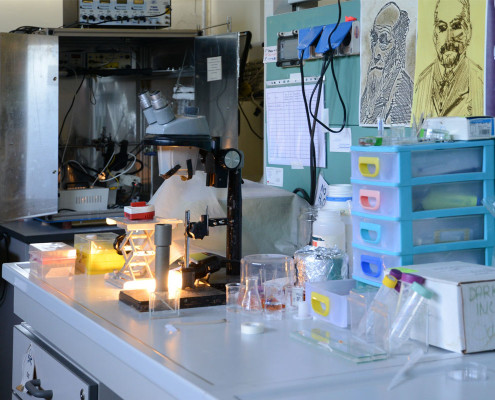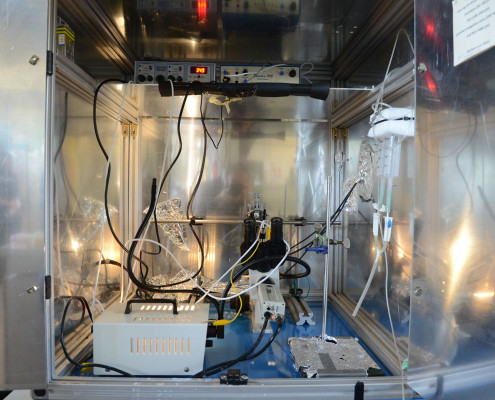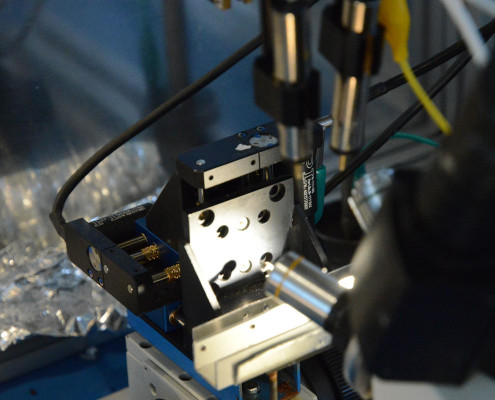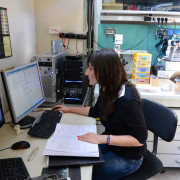The vibrating probe technique
The Vibrating Probe Technique is a non-invasive method for measurements of net ion fluxes (or gas molecules) from plant cells and leaving tissues thanks to the use of selective microelectrodes (custom made or commercial probes).
The advantage of this approach is basically the direct measurement of ion fluxes in a simple, quick, continuous and non-invasive manner. Two features lie at the core of the high resolution ion-selective probes: the properties of the commercially available liquid exchange membranes and the self-referencing noise and drift reduction.
No other available technique meets the exacting requirements of the non-invasive ion-selective probe, which permits measuring steady ion fluxes across the plasma membrane of single cells with a high temporal and spatial resolution. Moreover, this approach permits repeated observations on the same tissue over hours or days, due to the fast response time.
In this sense the “vibrating probe technique” complements the other methods available to observe the movements of ions across membranes or within cells. In our lab, this technique can be used to measure K+, Ca2+, Cl-, H+, O2, NO and H2O2 in plant tissues and it is a very effective method to assess plant physiological status and plant stress.

